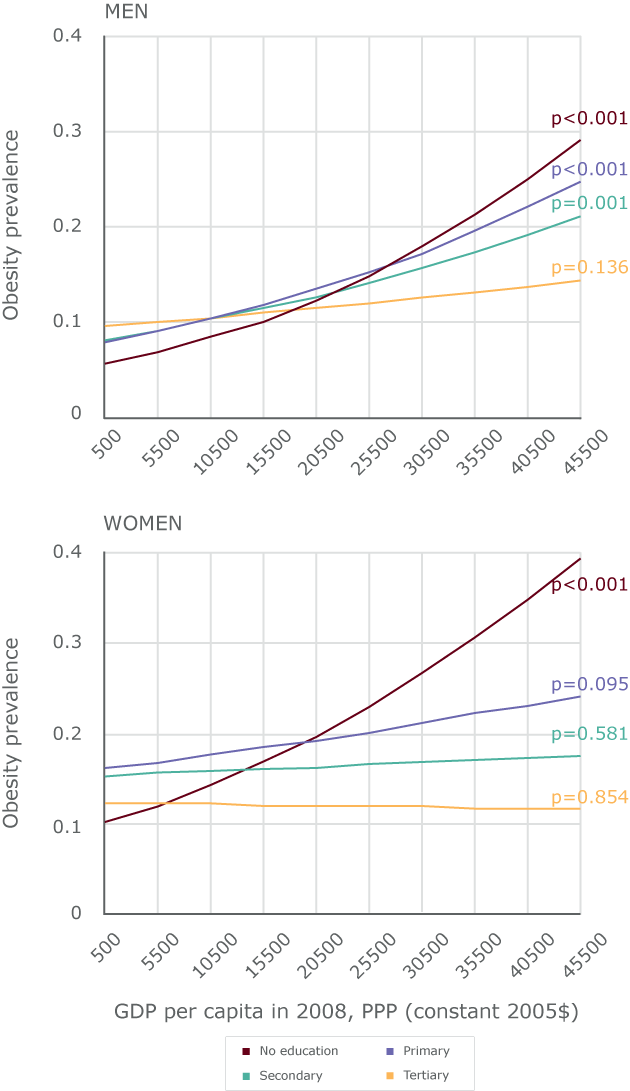Obesity levels have increased remarkably over the last thirty years throughout the globe. At the same time, there are considerable variations in the proportion of overweight adults across countries. So what are the factors behind this global divergence? Is economic development one of the drivers of such differences?
To answer these questions, Jonas Minet Kinge, Bjørn Heine Strand, Stein Emil Vollset, and Vegard Skirbekk analyse the association between obesity and economic development in 70 countries, covering 69% of world’s population. In their study, they assess the role of education in distinguishing the obesity levels of countries with varying levels of economic development.
The findings suggest that obesity is positively related to economic development only among people with lower educational levels, while the association is absent or even negative among those with higher levels of education. The authors also found that obesity is more prevalent in people with high educational attainment in low-income countries and among those with lower education in medium- and high-income countries.
Education is associated with obesity levels
Kinge et al. found that the level of economic development in a country is positively associated with obesity levels, but this association is modified by people’s educational attainment and varies slightly between men and women (Figure 1). The prevalence of obesity significantly increases with higher levels of GDP among people without education; the increase is even sharper in women. Regarding those with secondary education, the results show a positive association between the prevalence of obesity and GDP only in men and not in women. Obesity does not increase with higher GDP among individuals of both genders with a tertiary education.
Kinge et al. also found that in countries with lower GDPs, obesity is more prevalent in people with high education than in those with low education: In Sub-Saharan Africa obesity is more common among the highly educated. In Europe, conversely, the prevalence of obesity is higher among those with lower levels of education.
The authors state that obesity is a social issue and demonstrate that education plays a fundamental role in enabling a better understanding of the costs associated with overweight and of a changing lifestyle. This result can be instrumental in developing strategies aimed at reducing the obesity levels of populations.

Figure 1. Predicted obesity prevalence and Gross Domestic Product by education: Interactions between education and GDP, multilevel fixed effects model.
Note: The p values denote the significances of the slopes.
This Population Digest has been published with financial support from the Progress Programme of the European Union in the framework of the project “Supporting a Partnership for Enhancing Europe’s Capacity to Tackle Demographic and Societal Change”.